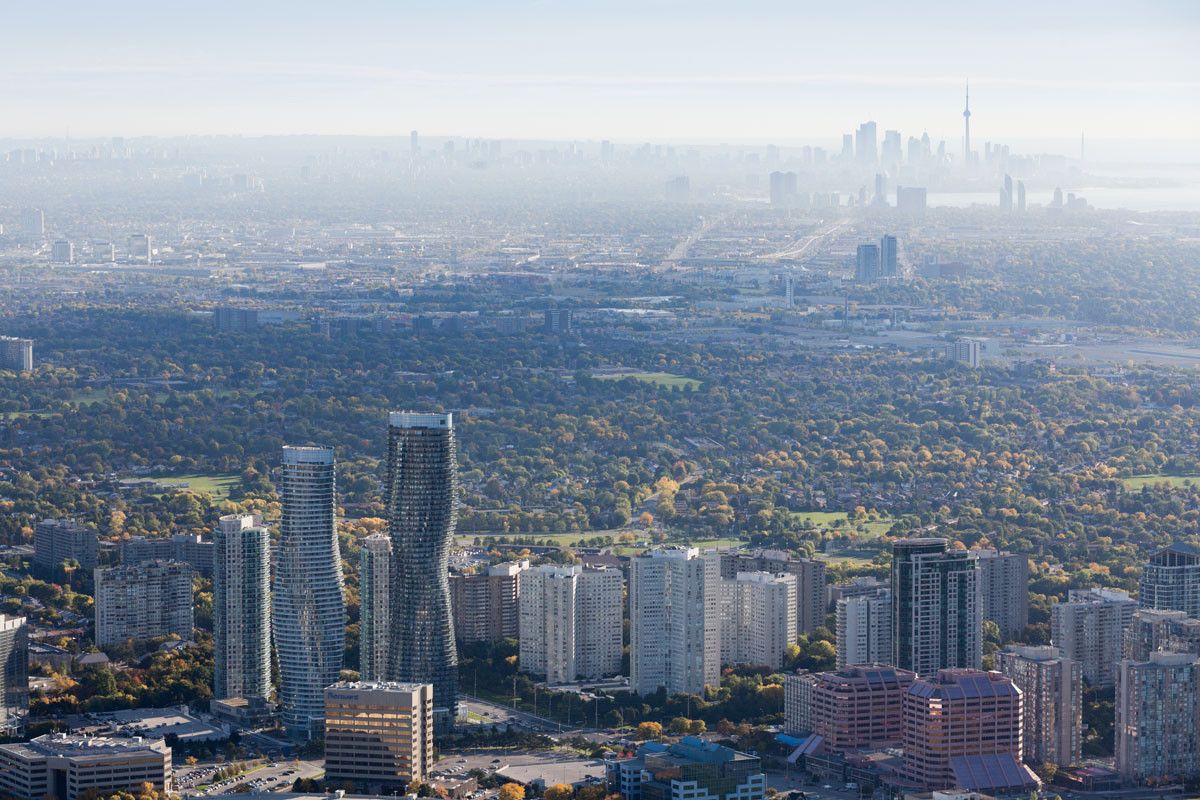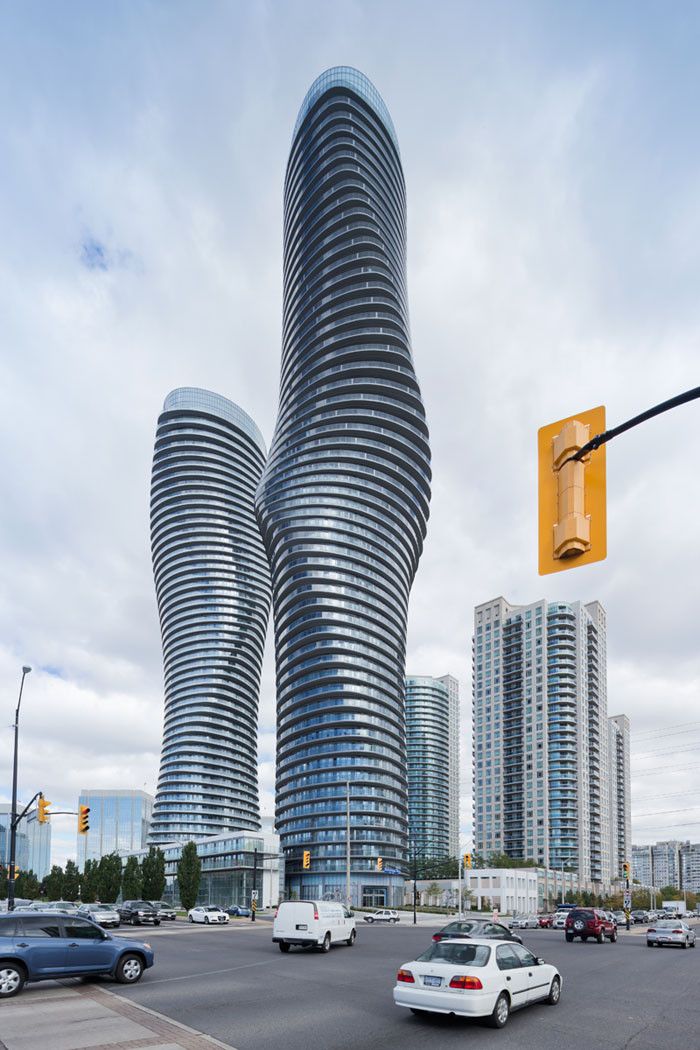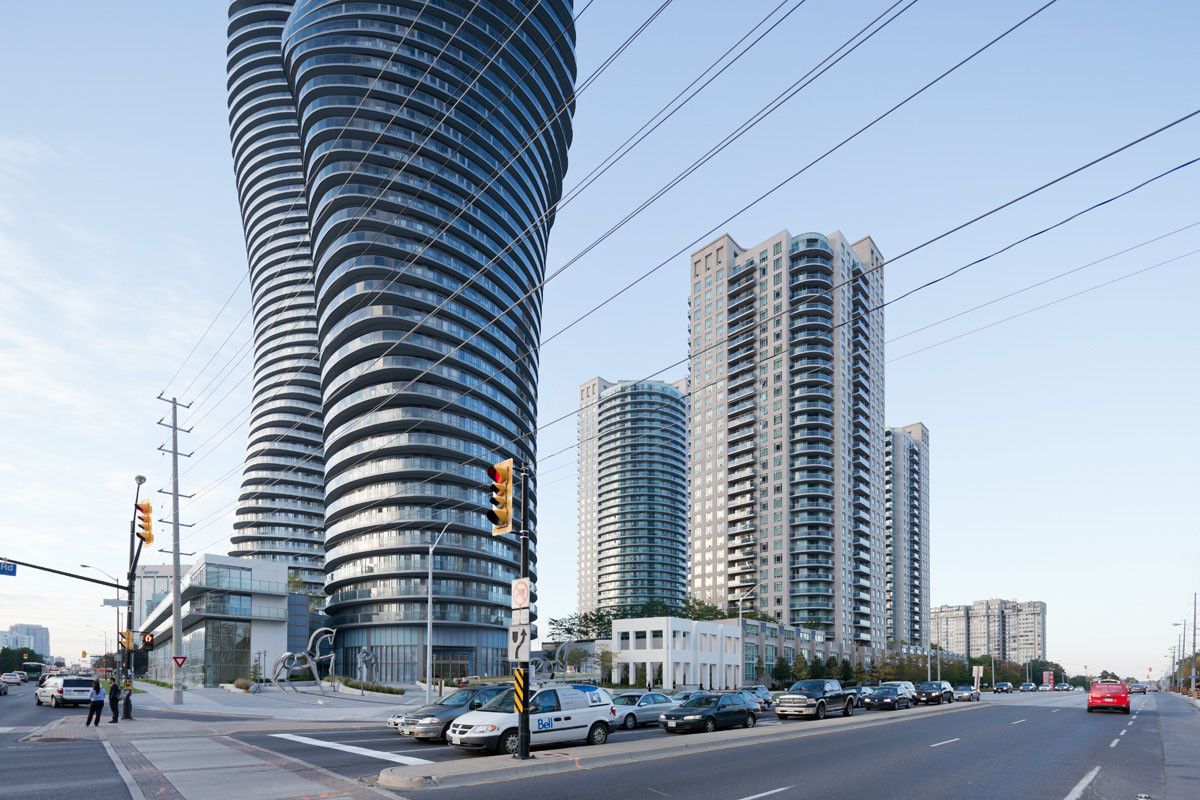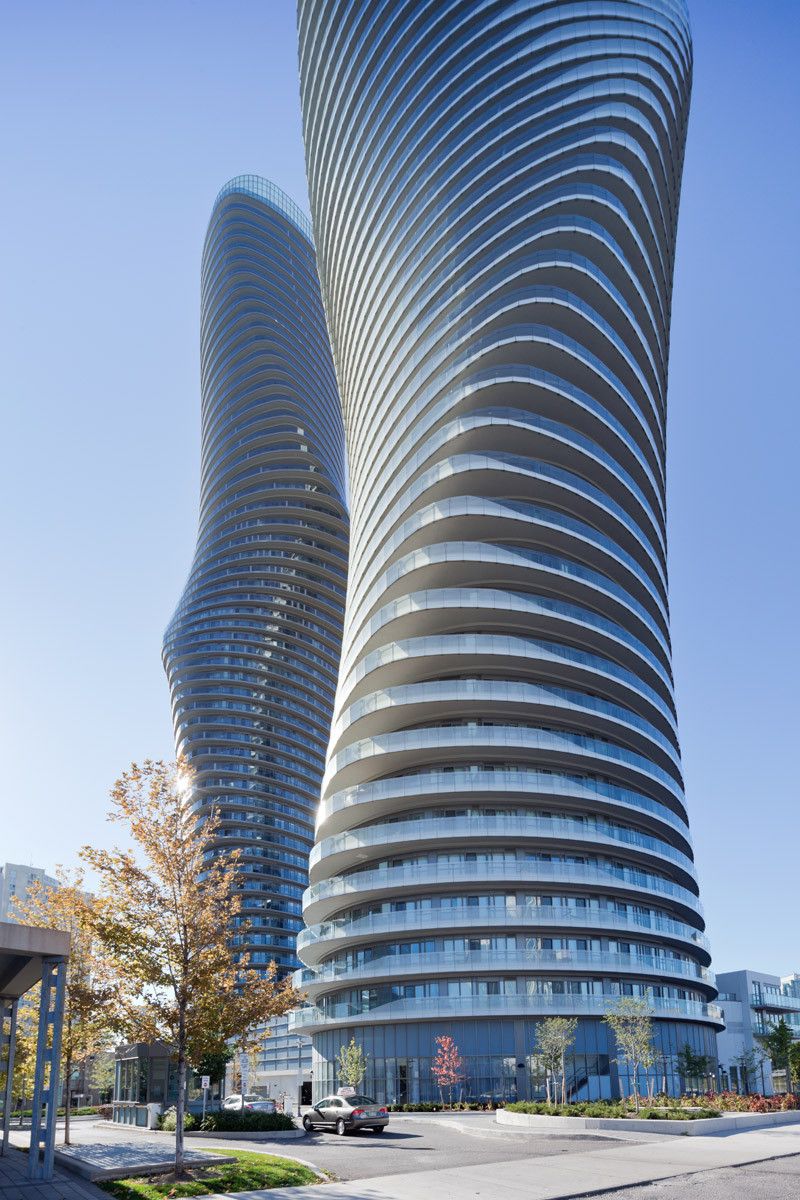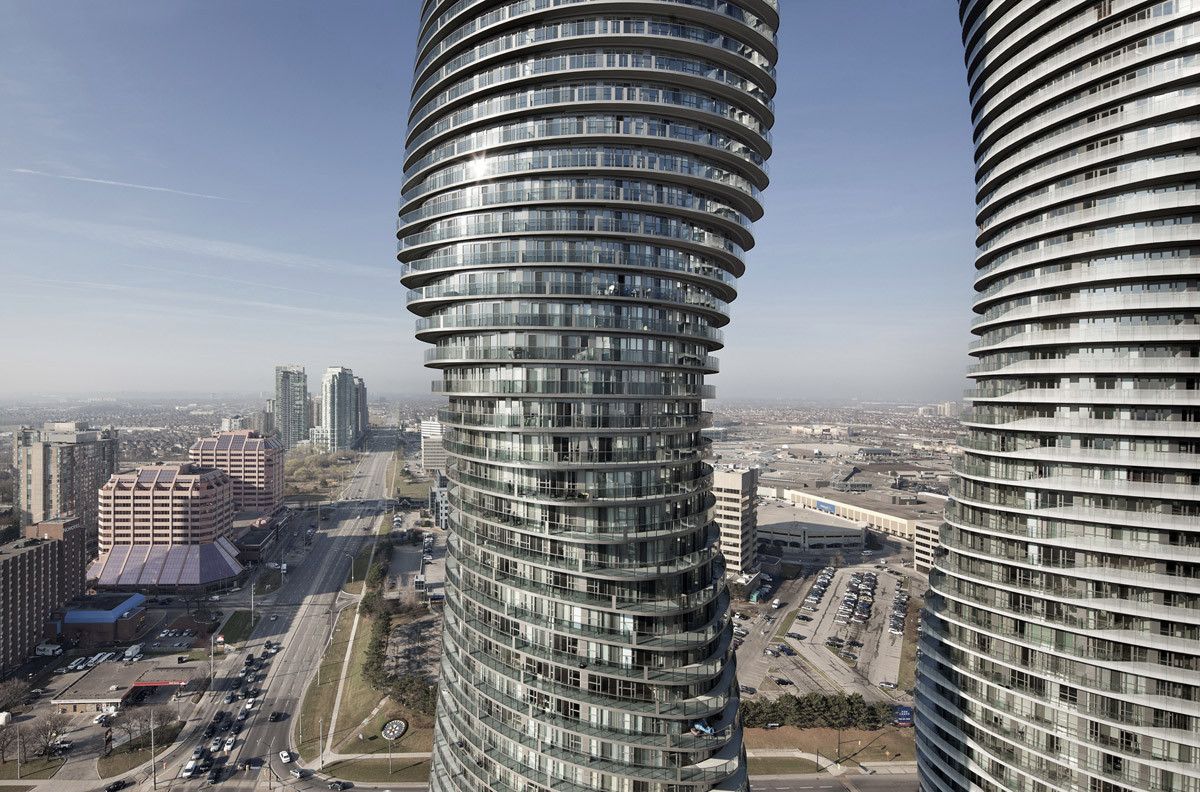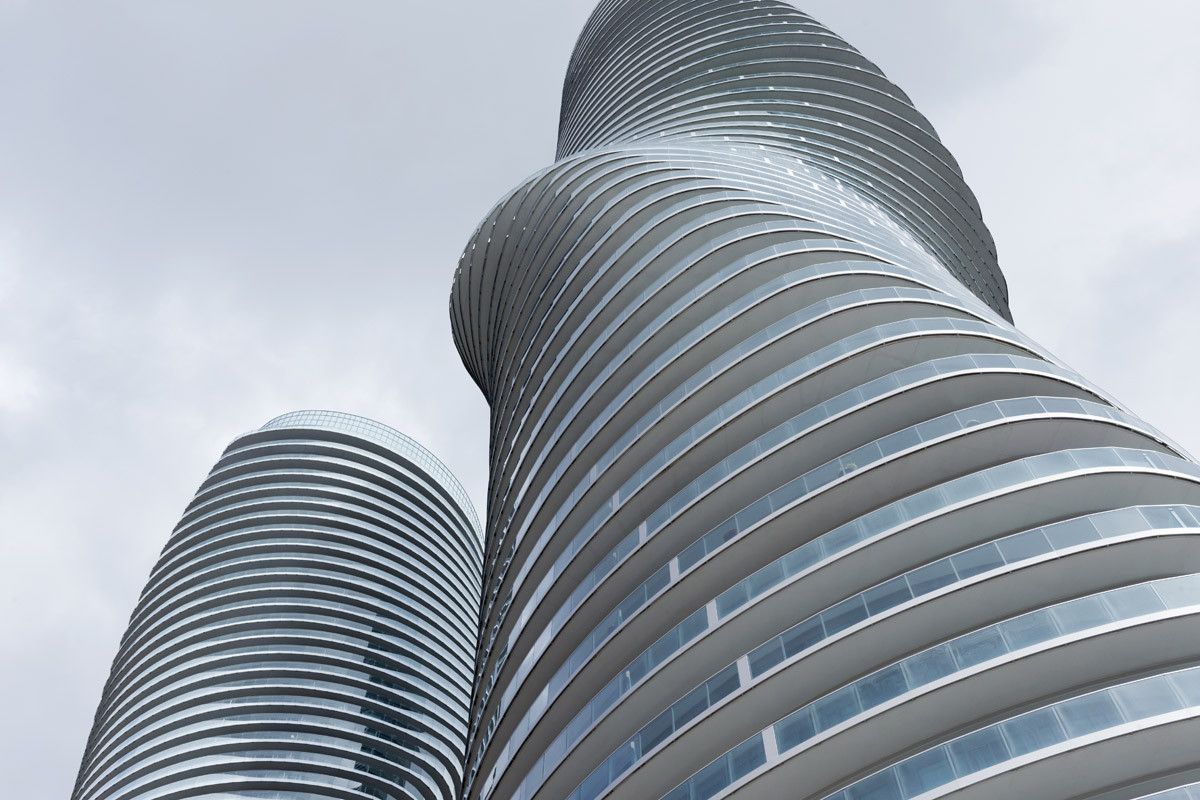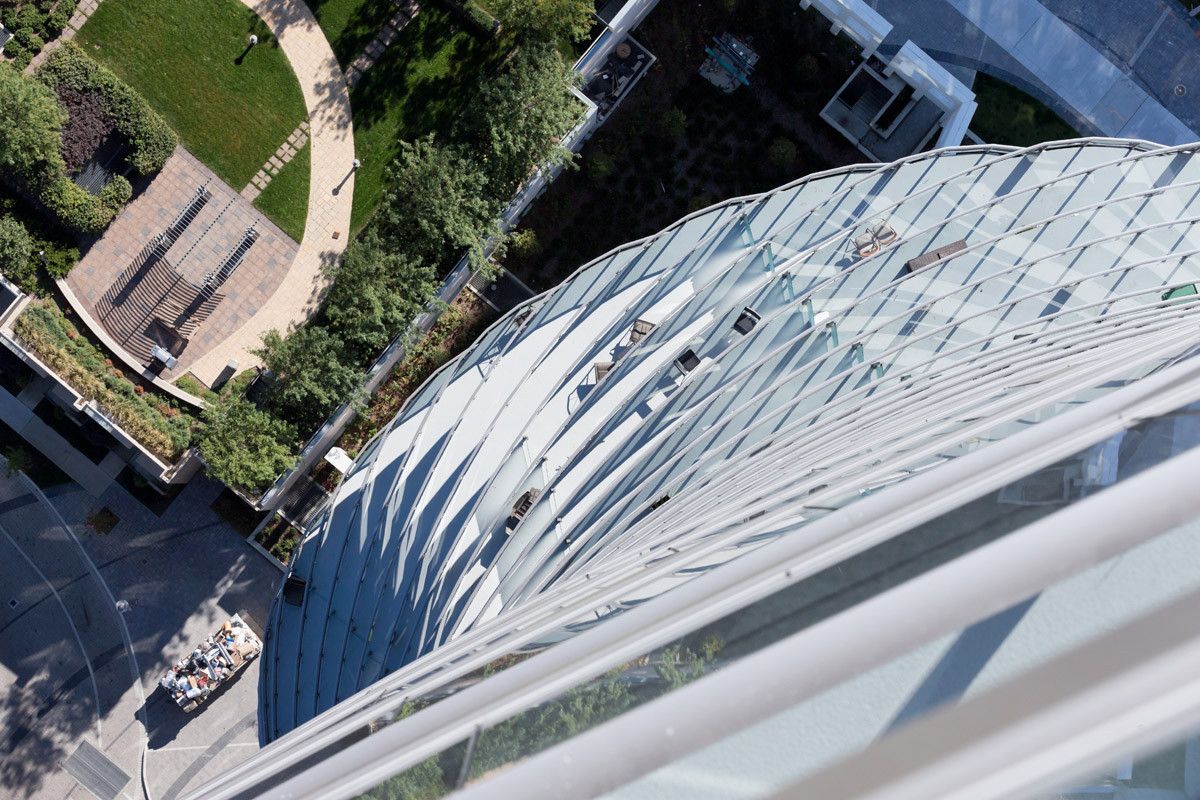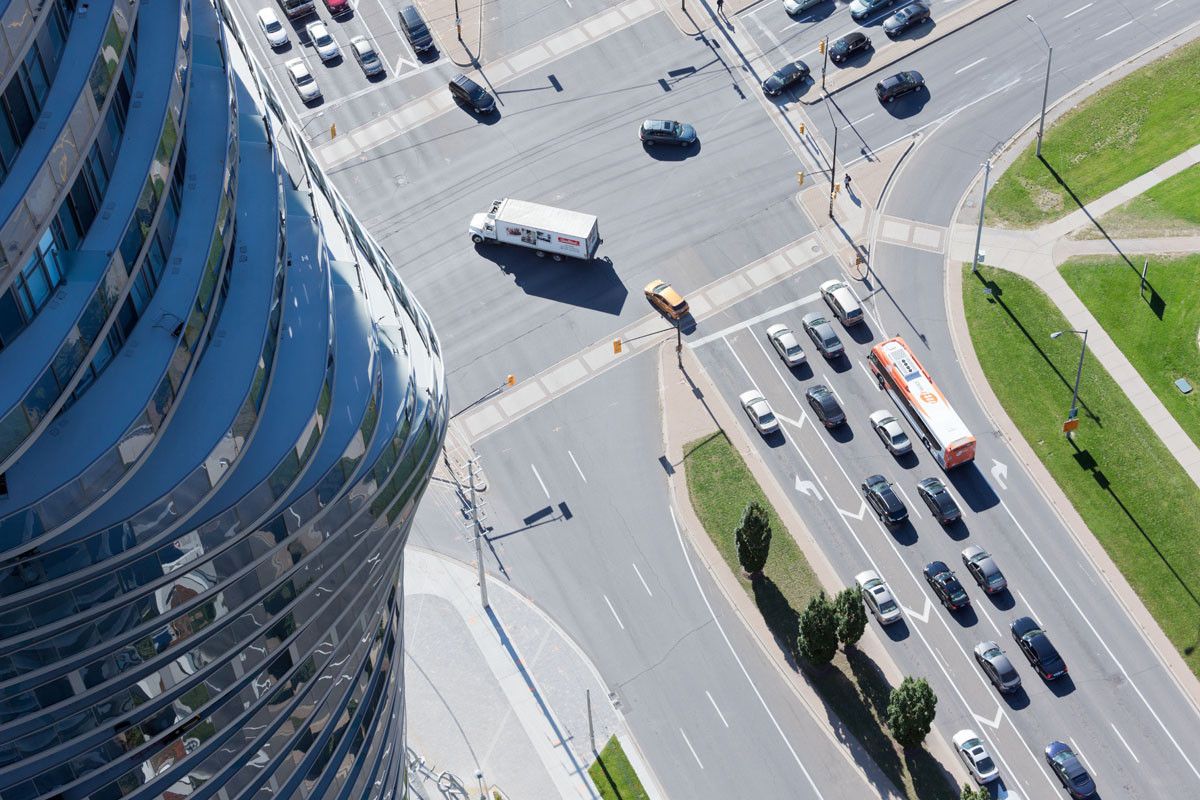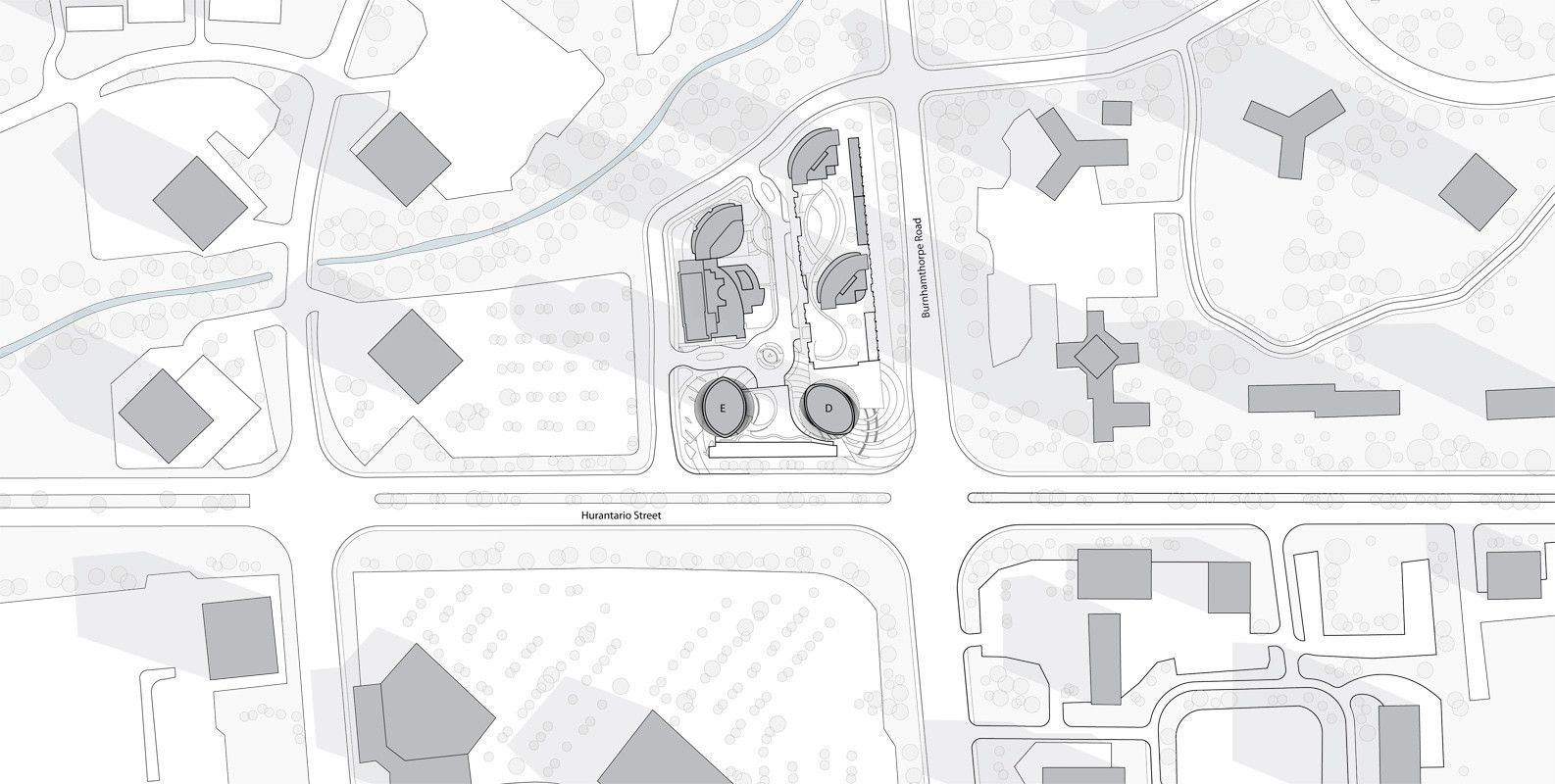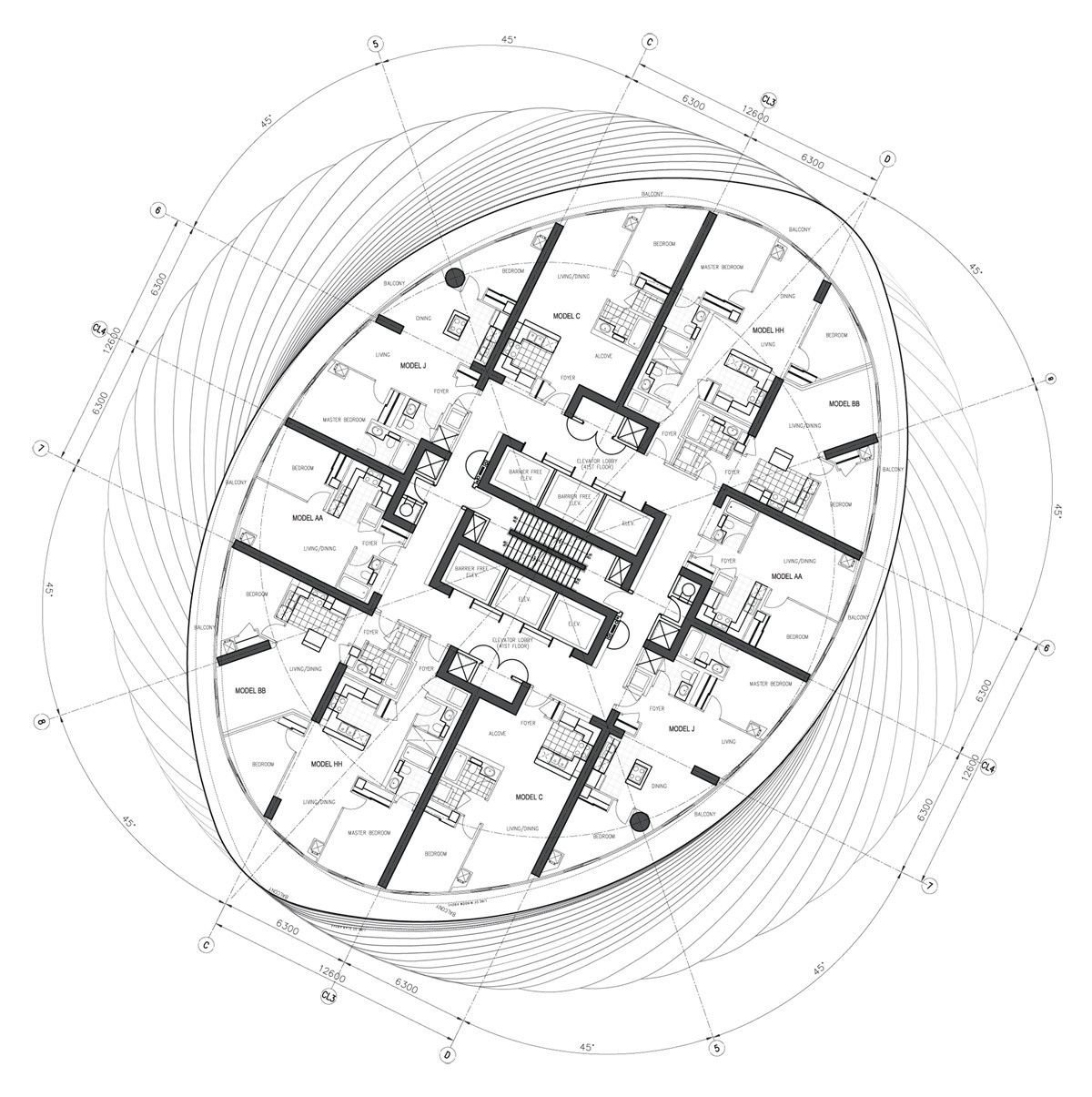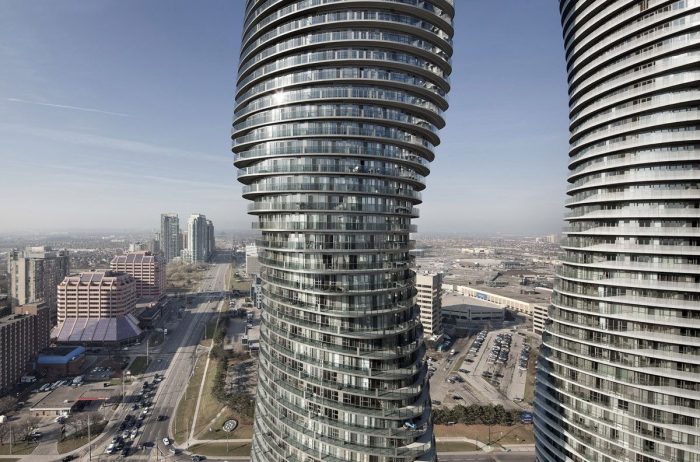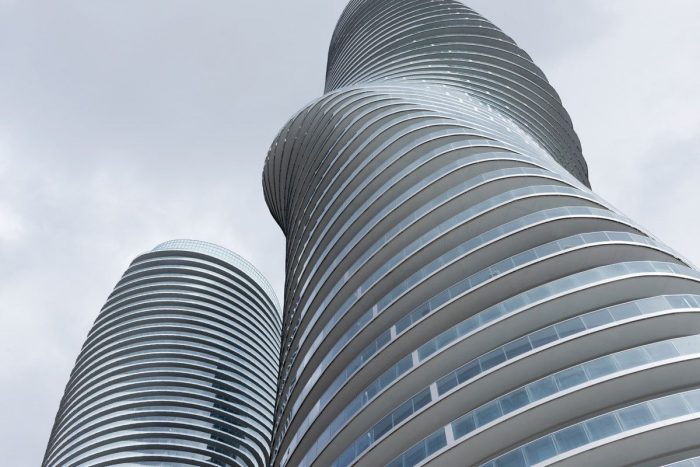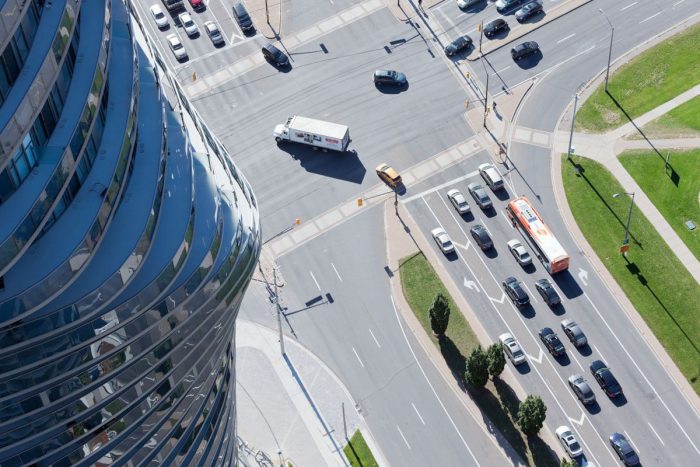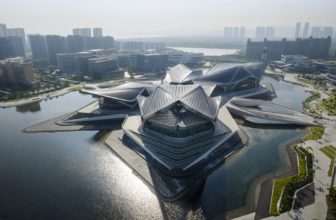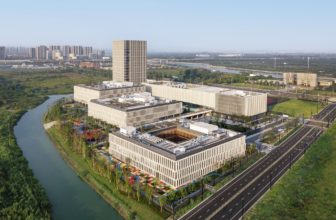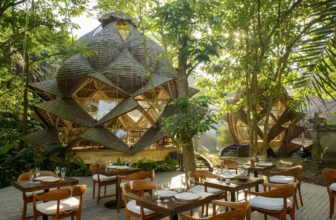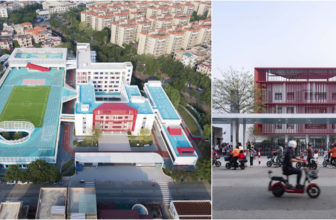Absolute Towers
The Chinese firm MAD has completed a pair of curvaceous twisted skyscrapers in the growing city of Mississauga, Canada. “The concept of the tower at the beginning was very simple“, said MAD founder Ma Yansong. “We just wanted to make something organic but different, more natural and more soft and not something too strong that would remind people of money or power“.
Like other suburbs in North America, Mississauga, near Toronto, has been quickly developing into an independent, urbanized area. Yet, the cityscape lacked a unique character. In response, MAD wanted to add something naturalistic, delicate and human in contrast to the backdrop of listless, boxy buildings. Sited at the junction of two main streets (Hurantario and Burnhamthorpe), the Absolute Towers gracefully bear their landmark status and act as a gateway to the city beyond. As a residential landmark that strives for more than simple efficiency, the buildings provide residents an emotional connection to their hometown and neighbors.
Throughout the process of urbanization, skyscrapers have been symbols of technological bravado, prime capitals and the societal projections of wealth and prosperity. This limited framework for skyscrapers often results in solutions limited by homogeneous, linear structures and degenerative duplication in business districts across the globe. Forced into an unnatural state of conformity, metropolitan life is negatively affected by these unchecked, efficiency-centric development practices. Without a challenge to the status quo, cities will continue to lack the cohesion of life as implied by the term: forest. A forest is a thriving ecosystem where every organism survives only in a state of symbiosis. New ambitions nurtured in a changing global consciousness challenge the aging pattern of last century’s development and favor fresh thoughtful, inspiring and eloquent solutions for tomorrow’s high-rises.
The Absolute Towers parallel the twisting fluidity or natural lines found in life. This activation of flow, forms an organic punctuation in the landscape and a desire for an urban acknowledgement of enthusiasm. Here, it is thrived to challenge the sustenance of common place boxy skyscrapers. The ambition was to provide each resident a unique experience of the city, a hierarchical distribution. Continuous balconies widen the individual viewing angles and promote community at the micro-scale of a single floor. At the macro, the cadence of the floors rising into the sky echo the modular rhythms of the human experience, yet emphasizes the movement of an adoring figure. It is hoped that this building can wake up metropolitan desires towards nature, such as sun and wind, and certainly, human bodies.
The current trend of sustainable design is reminiscent of the sudden rise in the glass-faced boxy buildings of last century. Sustainability, in concept, is often unfortunately simplified to the lowest common denominator. If the scope of sustainable ecology is limited to energy savings, it will become merely a demand for comfort while the yearning of a return to nature is ignored. Sustainability is a much greater concept which can guide a new culture of design resulting in real change. The main approach is to create a balanced environment that evokes the feeling of exploring nature while simultaneously a responsive model for the development of urban space in harmony with nature. Real sustainability results in a harmonious civilization and this is the biggest challenge of the time. How do we rebuild urban environments with life and emotion where people are connected and respected?
The torsional form of the towers is underpinned with a simply and inexpensive structural solution. The two residential towers are supported by a grid of concrete load bearing walls. The bearing walls extend and contract in response to the sectional fluctuation created by the rotation of the floors while the balconies consist of cantilevered concrete slabs. In order to ensure the elegant edge profiles, there is a thermal break in the slabs at the exterior glazing such that the insulation need not wrap the entirety of the balconies. Meanwhile, the dynamically fluid shaping of the towers, naturally aerodynamic, adeptly handles wind loading and ensures comfort throughout all the balconies.
Besides providing every resident with a nice exterior place to enjoy views of Mississauga, the balconies naturally shade the interior from the summer sun while soaking in the winter sun and reducing air conditioning costs.
Project Information :
Architect : MAD Architects
Location : Ontario, Canada
Project Year : 2012
Tower A : 45,000 square meters / 56 stories / 170 meters high
Tower B : 40,000 square meters / 50 stories / 150 meters high
Design Team : Shen Jun, Robert Groessinger, Florian Pucher, Yi Wenzhen, Hao Yi, Yao Mengyao, Zhao Fan, Liu Yuan, Zhao Wei, Li Kunjuan, Yu Kui, Max Lonnqvist, Eric Spencer
Structural Engineer : SIGMUND, SOUDACK & ASSOCIATES INC.
Photographs : Iwan Baan, Tom Arban, MAD Architects
